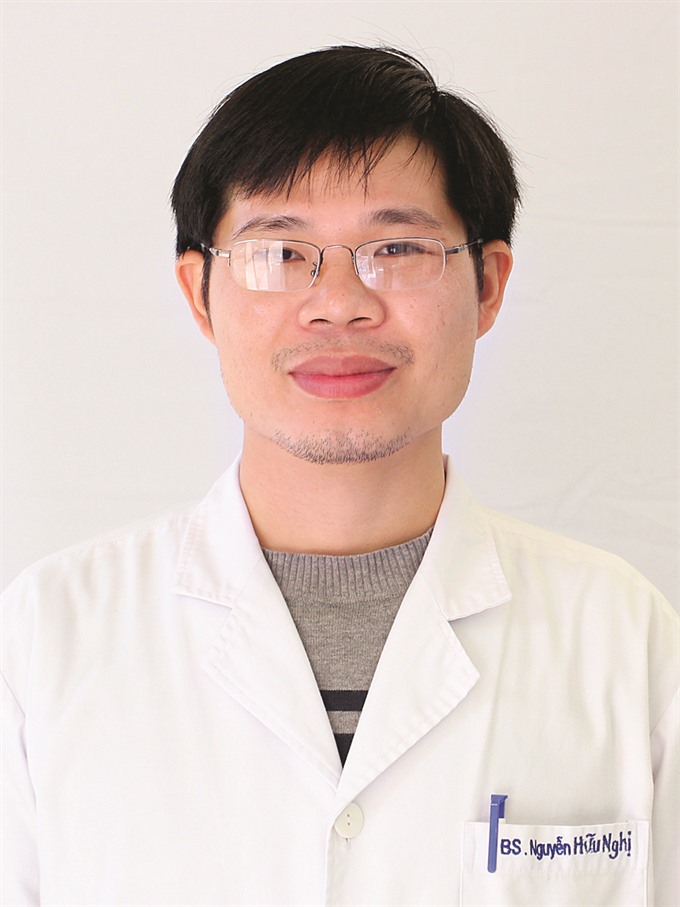 |
| Dr. Nguyen Huu Nghi. — Photo courtesy of Hanoi French Hospital |
Viet Nam News
By Dr. Nguyen Huu Nghi*
What are fibroids?
Fibroids are growths that develop from the muscle tissue of your uterus.
They are benign (non-cancerous), but can cause some problems. Fibroids can be located anywhere in the uterus—inside it, on the outer surface, attached to it by a stem-like structure or within its walls—and can vary greatly in size, shape and location. A woman may have only one fibroid or may have several in different places and sizes. Even the way they grow may vary; some may grow slowly and others quite fast.
Who can get fibroids?
Anyone really, but they are more common in women between 30 and 40 years of age.
What are the signs and symptoms?
Fibroids may be asymptomatic for a long time, but the most common symptoms are:
- Changes in your period – heavier periods which last longer and occur more frequently, increased cramping and bleeding outside your normal period
- Anemia
- Pain in your belly and lower back or during sexual intercourse
- Difficulties voiding your bladder, increased urge to pee, or constipation
- Swelling of your belly
- Miscarriage
- Difficulties to conceive a baby
Are there other complications?
The type of fibroid attached by a stem to the uterus may turn and twist which can cause pain and sometimes fever and nausea. Some fibroids may grow very large during pregnancy, making it impossible for a baby to be delivered normally, requiring a cesarean section.
How are fibroids diagnosed?
Your doctor will ask you questions and perform a physical examination. After that she may order several tests to confirm the diagnosis. The most common ones are:
- Pelvic ultrasound – to detect the shape and size of your uterus and tubes and whether there are any changes.
- Hysteroscopy – a thin tube is inserted through the vagina into the opening of the uterus to check whether there are any fibroids inside the cavity.
- Hysterosalpingography – an imaging test using x-rays which can show any changes in size and shape of the uterus and the tubes, indicative of fibroids that have formed inside the uterus wall.
- Laparoscopy – During the procedure small incisions are made on your belly and a small device is inserted into your abdominal cavity, which allows the doctor to detect fibroids outside the uterus.
Your doctor may prescribe other imaging tests, if necessary.
When do you need treatment?
Many fibroids are small and practically asymptomatic. In that case, no treatment is necessary and your doctor may just recommend regular check-ups. If fibroids are associated with some of the following symptoms, your doctor may recommend either medication or surgery.
Treatment is recommended for women with:
- Heavy or painful periods (Menorrhagia - Dysmenorrhea)
- Bleeding between periods (Metrorrhagia)
- Anemia due to bleeding
- Pain in the lower abdomen and pelvic area
- Fast growing fibroids
- Infertility
- Cases when the doctor cannot rule out a cancerous lesion
What kind of treatment is available?
There are drug treatments and surgery available. Talk to your doctor to find out what is the best solution for you.
Drug treatments to control pain or bleeding:
- Oral contraceptives or hormone releasing intrauterine devices (IUD) may help to control heavy bleeding and associated pain but will not make the fibroids go away.
- Gonadotropin-releasing hormone (GnRH) agonist – hormonal treatment commonly prescribed to prepare women for fibroid surgery, shrinking them and reducing bleeding risk. GnRH cannot cure fibroids and because they have severe side effects they are not recommended for long-term treatment beyond six months.
Sometimes surgery is the best option. The following procedures are possible depending on the type, size and location of the fibroids:
- Endometrial ablation –a technique that removes the endometrium (the lining of the uterus). Very thin tools are inserted through the vagina to reach the uterus and then various techniques may be used (Hydrothermal, electrical, balloon, radiofrequency, etc).
- Uterine artery embolization (UAE) is a procedure to treat fibroids without surgery. Instead, the doctor (a radiologist) uses special methods to cut off the blood supply of the fibroids, causing them to shrink.
- Myomectomy – If you think you might want to get pregnant in the future, your doctor might suggest a myomectomy. This surgery removes the fibroids but leaves healthy tissue of your uterus. Depending how many fibroids you have, how big they are, and where they are located, there are three options:
- Open abdominal surgery
- Laparoscopic or key hole surgery, or
- Hysteroscopy Fibroid Resection – for the removal of fibroids in the inside of the uterus using an instrument called a hysteroscope. This is usually performed under general anesthesia, as a day-care procedure such as UAE and endometrial ablation.
- Hysterectomy – surgical removal of the fibroids and the uterus. This is usually the last solution, when every other treatment has failed, as a woman will not be able to have children after her uterus has been removed. — Hanoi French Hospital
* Dr Nguyen Huu Nghi is a Specialist in Obstetrics & Gynecology at Hanoi French Hospital.
He works with his multidisciplinary team of Obstetrics & Gynecologyother and other specialists to provide high quality holistic care to all his patients.
If you have any questions or want to book an appointment with our doctors, please contact us at our phone number 84 – 24.3577.1100, or email us at contact@hfh.com.vn.